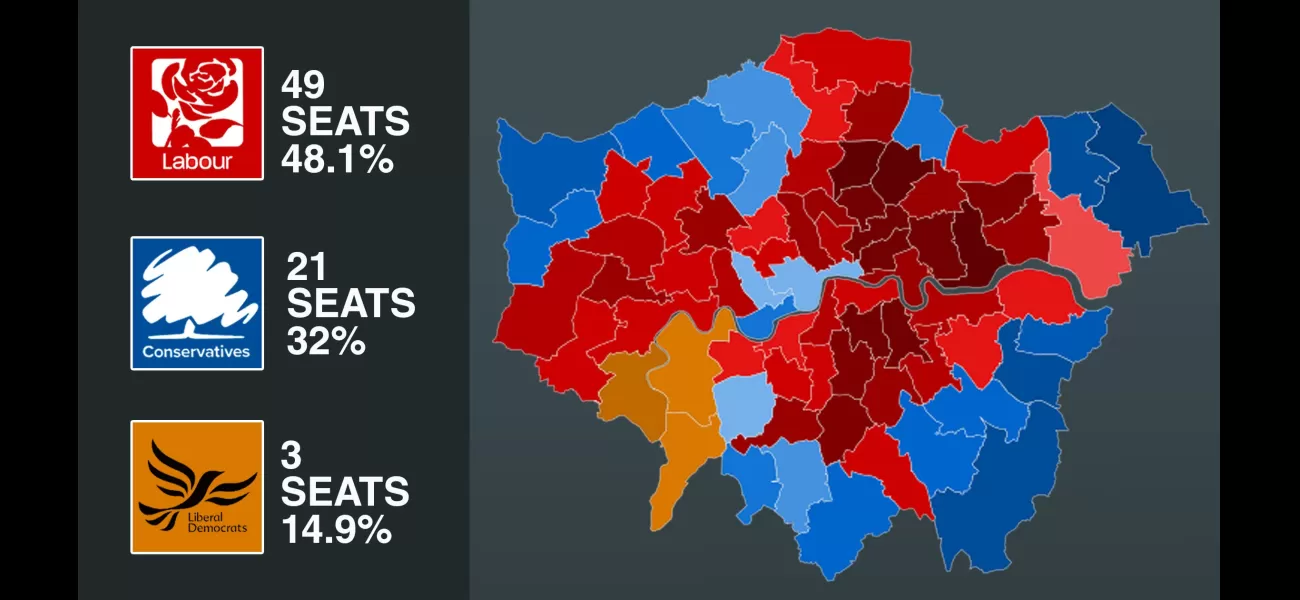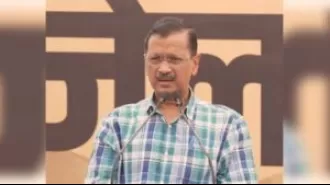Learn how Londoners voted in the recent general election with this detailed map.
In 2019, many voters chose the candidate they considered the lesser of two evils.
May 22nd 2024.

In December of 2019, the United Kingdom held its first winter general election since 1923, resulting in Boris Johnson's return to Number 10 Downing Street. The election was heavily influenced by the ongoing Brexit debate, with the Conservative Party's slogan of "Break the gridlock, get Brexit done" dominating the campaign. However, issues such as Islamophobia and anti-Semitism also played a significant role.
The election polls were a challenge to decipher, both then and now, with some voters admitting that they were simply choosing the "least worst" candidate. It was a rather uninspiring race, making the act of voting seem more like a race to the bottom rather than a race to the top. As Sir Keir Starmer took the stage in Westminster, it became clear that London's diverse population and strong pro-Remain sentiment had a significant impact on the election results.
As the country prepares for the next general election, a map from 2019 reveals the political temperature in the capital. For those unsure about the world of politics, Metro's brand new politics newsletter, Alright, Gov?, offers regular updates from Westminster and beyond, exclusive interviews with influential figures, and easy-to-understand breakdowns of how today's headlines will actually affect you.
So, what was the outcome of the 2019 general election? It was a resounding victory for the Conservative Party, who secured 365 seats and a majority of 80 in the House of Commons. This was an increase of 48 seats from the previous election in 2017 and provided the incumbent PM with a strong mandate to move forward with his plans.
Labour, led by Jeremy Corbyn, suffered a significant loss, securing only 202 seats, a decrease of 60 from their previous performance. This was the party's worst result since 1935 and ultimately led to Corbyn stepping down as leader and the rise of Sir Keir Starmer. The Liberal Democrats, under Jo Swinson's leadership, won 11 seats, a gain of one seat.
But how did London vote? The capital stood as a beacon of Labour support amidst a sea of Conservative blue that swept across much of the country. A map from the Agency reveals Labour's dominance in the inner city and many suburban areas, securing 49 out of 73 seats. Constituencies like Islington North, held by Corbyn, and Tottenham, represented by David Lammy, were strongholds for the party.
There were also notable gains for Labour, such as winning the strongly pro-Remain area of Putney from the Conservatives. However, the Tories did manage to win the key London seat of Kensington by a margin of only 150 votes. Other closely-contested seats included Johnson's own constituency of Uxbridge and South Ruislip, which he managed to keep by a small majority. These results were in stark contrast to the Conservative's overall success in the country, where they secured a large majority.
London's diverse and younger population had a significant impact on voting behavior, with turnout varying widely across the city. For example, Islington North had a turnout of 73.6%, while other areas had much lower participation. Political analysts believe that similar patterns could play a crucial role in the upcoming election.
The election polls were a challenge to decipher, both then and now, with some voters admitting that they were simply choosing the "least worst" candidate. It was a rather uninspiring race, making the act of voting seem more like a race to the bottom rather than a race to the top. As Sir Keir Starmer took the stage in Westminster, it became clear that London's diverse population and strong pro-Remain sentiment had a significant impact on the election results.
As the country prepares for the next general election, a map from 2019 reveals the political temperature in the capital. For those unsure about the world of politics, Metro's brand new politics newsletter, Alright, Gov?, offers regular updates from Westminster and beyond, exclusive interviews with influential figures, and easy-to-understand breakdowns of how today's headlines will actually affect you.
So, what was the outcome of the 2019 general election? It was a resounding victory for the Conservative Party, who secured 365 seats and a majority of 80 in the House of Commons. This was an increase of 48 seats from the previous election in 2017 and provided the incumbent PM with a strong mandate to move forward with his plans.
Labour, led by Jeremy Corbyn, suffered a significant loss, securing only 202 seats, a decrease of 60 from their previous performance. This was the party's worst result since 1935 and ultimately led to Corbyn stepping down as leader and the rise of Sir Keir Starmer. The Liberal Democrats, under Jo Swinson's leadership, won 11 seats, a gain of one seat.
But how did London vote? The capital stood as a beacon of Labour support amidst a sea of Conservative blue that swept across much of the country. A map from the Agency reveals Labour's dominance in the inner city and many suburban areas, securing 49 out of 73 seats. Constituencies like Islington North, held by Corbyn, and Tottenham, represented by David Lammy, were strongholds for the party.
There were also notable gains for Labour, such as winning the strongly pro-Remain area of Putney from the Conservatives. However, the Tories did manage to win the key London seat of Kensington by a margin of only 150 votes. Other closely-contested seats included Johnson's own constituency of Uxbridge and South Ruislip, which he managed to keep by a small majority. These results were in stark contrast to the Conservative's overall success in the country, where they secured a large majority.
London's diverse and younger population had a significant impact on voting behavior, with turnout varying widely across the city. For example, Islington North had a turnout of 73.6%, while other areas had much lower participation. Political analysts believe that similar patterns could play a crucial role in the upcoming election.
[This article has been trending online recently and has been generated with AI. Your feed is customized.]
[Generative AI is experimental.]
0
0
Submit Comment





